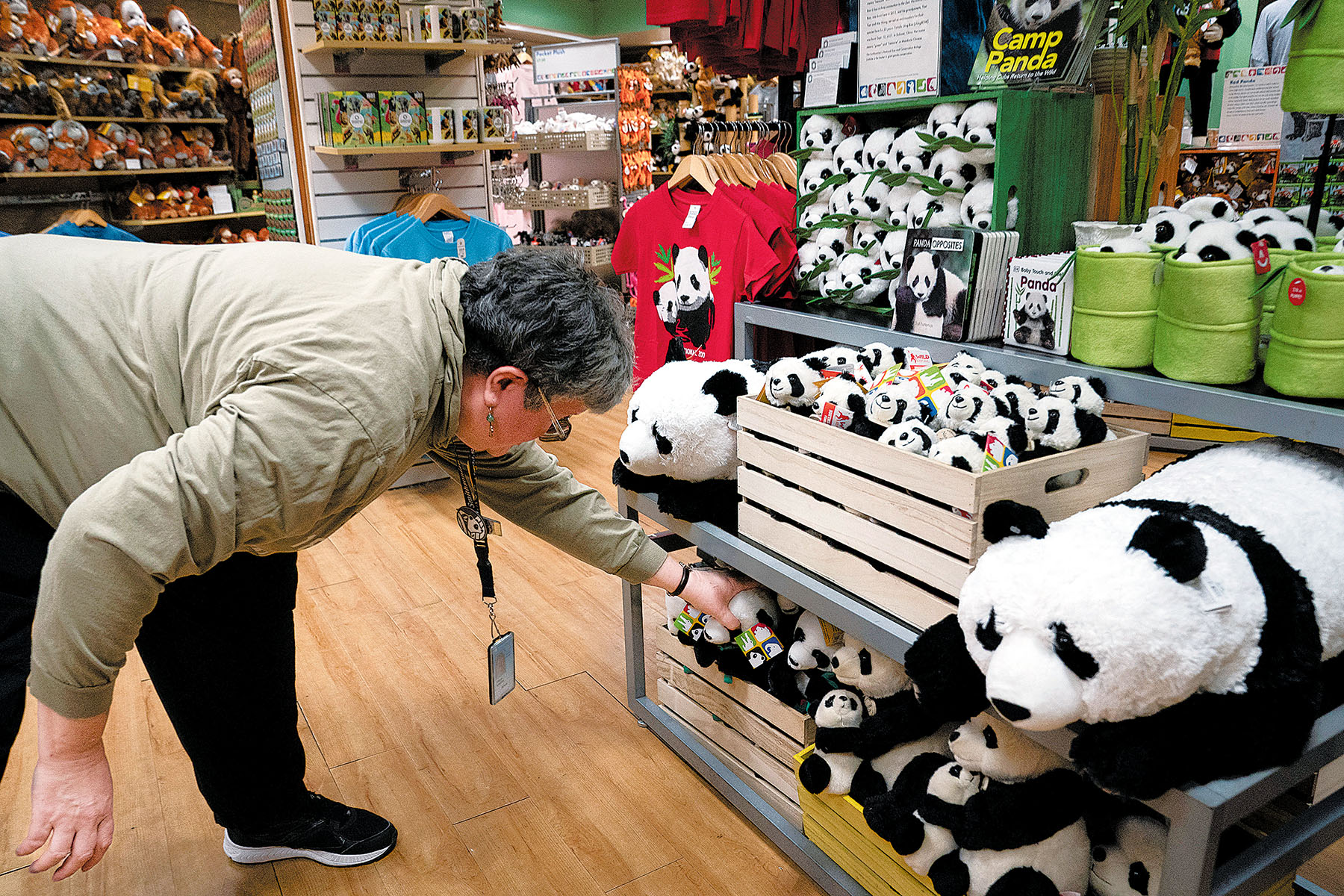US capital’s new National Zoo guests treasured as ambassadors of hope and peace

The arrival of two giant pandas has generated much cheer in Washington, DC, and the National Zoo in the US capital is making every effort to make the stay of its newest guests as comfortable as possible.
Bao Li and Qing Bao, both 3 years old, arrived in the United States from China on Oct 15.
The National Zoo had been without pandas for 11 months after Mei Xiang, Tian Tian and their cub Xiao Qi Ji left for China last November.
“We’re very excited. It gives us so much hope. Who doesn’t love a panda? Everyone loves pandas!” gushed Gene Hunt, 68, of Washington, DC, as he took pictures of decorations announcing the arrival of the beloved bears. Hunt had been following the news daily to find out when the bears would return.
“They are beautiful. The panda is the symbol of peace between the two nations. We need more of that. We need more exchanges and more cultural awareness,” he said.
Another Washington resident, Albert Garcia, 64, sounded equally elated as he thanked China for sending the bears. “We love it. And we promise to take good care,” he said, adding that he hoped the pandas would continue to serve as ambassadors between China and the US.
After a 19-hour, 13,277-kilometer journey on FedEx “Panda Express” from Chengdu, in Sichuan province, the pair landed at Dulles airport in Virginia at 11:30 am on Oct 15.
They were taken in two trucks to the Smithsonian’s National Zoo and Conservation Biology Institute.
A lively crowd of panda fans sporting black-and-white accessories and an international media contingent equipped with long-lens cameras clustered at the zoo gate as the trucks rolled in.
At the zoo, Bao Li and Qing Bao exited their crates and immediately began exploring their enclosure, where their keepers had stocked an ample supply of bamboo. The pair are being quarantined for 30 days and will make their public debut on Jan 24.
They are the second pair of pandas to arrive in the US this year.
Yun Chuan and Xin Bao debuted at the San Diego Zoo in August, marking a new round of conservation and research collaboration between China and the US. A third pair is expected in San Francisco.
Bao Li, which means “treasure” and “energetic” in Chinese, is a fitting name for the curious and extroverted male who was born in Sichuan but has a deep familial connection with Washington.
His mother, Bao Bao, was born at the National Zoo in 2013, and his grandparents, Tian Tian and Mei Xiang, are much loved in the US capital, where they served as ambassadors for their species for 23 years.
“Bao Li is just a charmer. He is an acrobat. He has already tried to look for places to climb,” Brandie Smith, the John and Adrienne Mars director of NZCBI, said, adding, “the other one is more thoughtful, a little more deliberate, maybe more willful”. Qing Bao means “green” and “treasure” in Chinese.
“It’s going to be fun to kind of get to know them,” Smith said. “We also have incredible scientists who work here with us, and this really is key to decades of successful cooperation and collaboration with our colleagues in China.”
China and the US have been working on panda conservation for decades, ever since former first lady Patricia Nixon welcomed the first giant pandas in 1972. Both countries helped move the giant panda from being “endangered” to “vulnerable” on the International Union for Conservation of Nature Red List of Threatened Species.
James Steeil, supervisory veterinary medical officer of NZCBI, who traveled with the pandas on their trip from China, said, “They are eating normally, they are active. They explored. They’ll slowly come out over the next couple of days.”
Steeil said the US and China have been working closely on the pandas’ primary food source, bamboo, and researching its availability and connections to climate change.
“We also got the recipe for wowotou,” Steeil said of the Chinese word for “steamed cornbread”, which is a favorite food of pandas. “It’s a combination of three flours, egg, oil, a little water, and mineral supplements. We put them together and steam it.”
Steeil said he has learned some Chinese words, including a few in the Sichuan dialect, which he said the pandas are used to hearing.
Laurie Thompson, the zoo’s assistant curator of giant pandas, who has been to China eight times, said, “We will start training — basic things like ‘open your mouth’ or ‘show us your paw’.”
The David M. Rubenstein Family Giant Panda Habitat will reopen when Bao Li and Qing Bao make their public appearance. The habitat has been under renovation since last November.
The zoo upgraded new rock structures with shallow pools for the pandas to wade, bathe and play in. There are stands that hold bamboo upright and require the pandas to reach up and pull the stalks down, simulating foraging techniques.
Climbing structures — made of natural wood beams and woven hammocks — offer additional vertical space while also challenging the climbing skills of the pandas.


